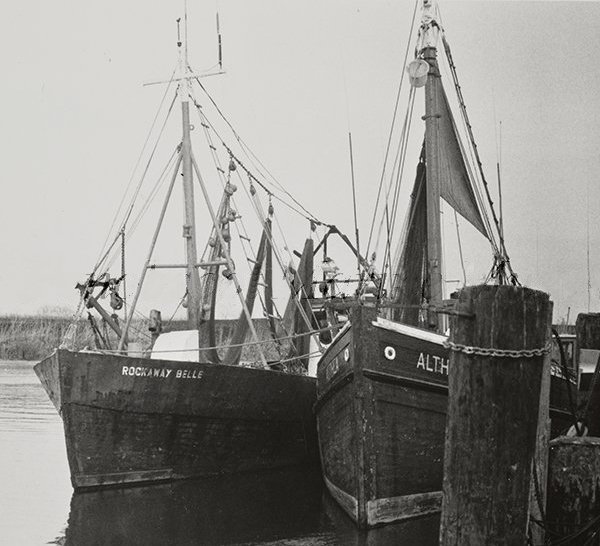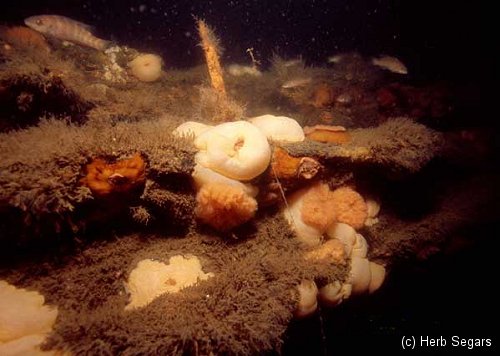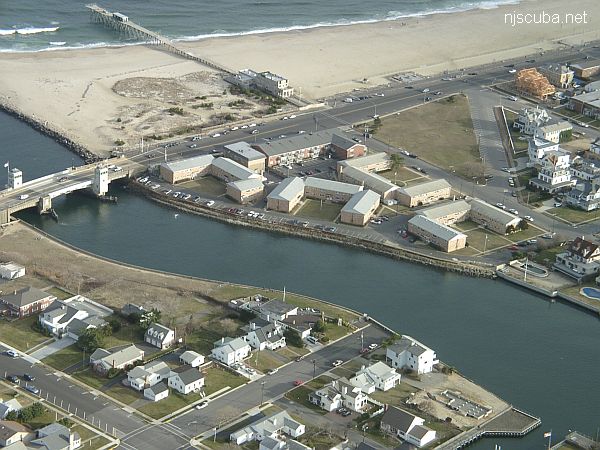- Type:
- shipwreck, sailing ship, Norway
- Specs:
- ( 160 ft ) 960 tons, 20 crew
- Sunk:
- Tuesday December 26, 1876
ran aground in bad weather - no casualties - Depth:
- 25 ft
low scattered wooden debris, 200 yards offshore
More: Rjukan ...
More: Manasquan Dive Sites Chart ...
low scattered wooden debris, 200 yards offshore
More: Rjukan ...

Rockaway Belle is listed as Army tug-transport T-1, built by Simms Brothers, Dorchester MA, 1942. 'T-boats' were 65-foot, 45 ton diesel-powered, passenger-cargo boats that doubled as harbor tugs. 170 of them were constructed during WWII, and many more afterwards. From 1940 through 1951 all T-Boats were built of wood, thereafter steel. Rockaway Belle was T-1 of the T-1 class, sold as surplus in 1947.
Rockaway Belle sank some time after 1977, there is a record of her active then.
More: Rockaway Belle (US Army T-1) ...

More: Rump ...
Sea Girt Inlet is reduced to an outflow pipe. The water it releases is often so contaminated with goose droppings that it causes beach closings for miles around.
More: Sea Girt Inlet ...
3.6 Nautical Miles off Sea Girt
Depth: 60-75 ft [download]
More: Sea Girt Artificial Reef ...

A very large intact steel deck barge, lying upright, north-south. The southern end is partially collapsed and opened up, allowing easy access to at least part of the inside. Rust holes in the deck let light in throughout the rest of the interior, although they are too small to fit through. A great spearfishing site, and not bad for lobsters. The crane lies about 1/4 mile away.
More: Seaside Crane barge ...

The Shark River is your best bet for shore diving in the northern half of the New Jersey coastline, far better than the Manasquan River. Shark River offers at least four different locations to dive: either side of the inlet, with rock jetties to explore, slightly upstream at A Street in Belmar, and upriver in the back bay area at L Street, Belmar. The wreck of the Malta is also just a few blocks south on the beach, but hardly worth diving.
More: Shark River ...

Yet another place to dive the Shark River is on the south side, near the intersection of 1st Avenue and A Street, behind the apartments. There is limited but very convenient free parking. A small cement stairway leads down to a concrete ledge above the water. Climb down between the big rock and the bulkhead, where you will find more steps underwater. ( Whoever B.M and M.M. are - thank you! )
More: Shark River - A Street ...